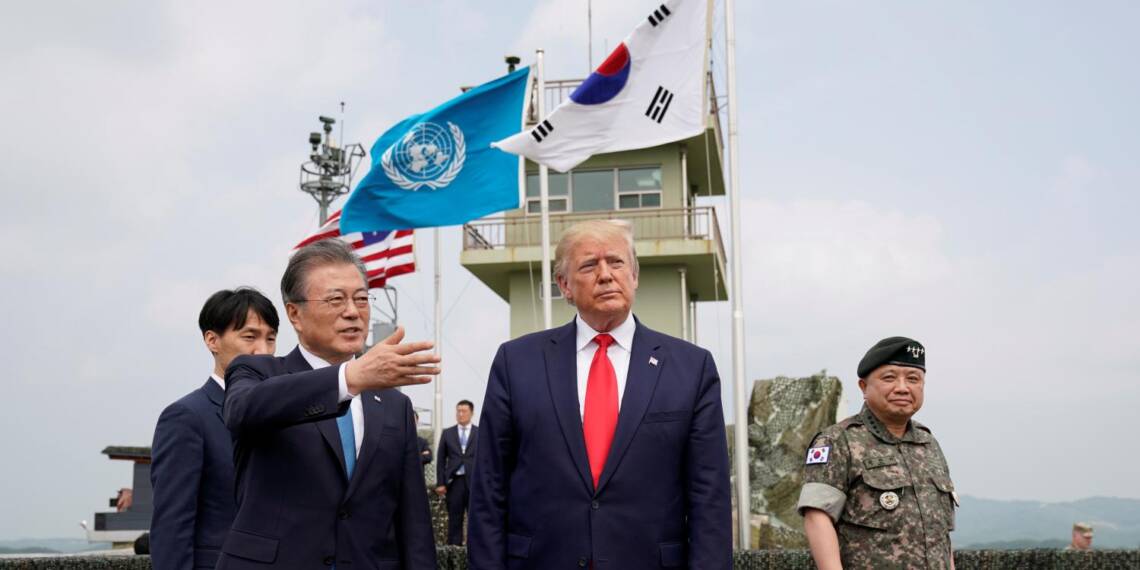The Trump administration is reportedly evaluating a plan to redeploy approximately 4,500 U.S. troops from South Korea to other locations, such as Guam, as part of an informal policy review concerning North Korea. The report, first published by The Wall Street Journal citing unnamed U.S. military officials, suggests the move is part of broader considerations over America’s global military posture and financial commitments.
Although the proposal is in its early stages, it has already sparked concerns among allies about U.S. strategic intentions in Asia. South Korea’s defense ministry has stated that no formal discussions have taken place and reaffirmed its commitment to joint defense.
Trump’s Stance on U.S. Troops in Korea
President Donald Trump has consistently expressed frustration with what he views as disproportionate U.S. military spending abroad, particularly in allied countries. During his presidency, he pushed for a dramatic increase in South Korea’s financial contributions to host U.S. forces—reportedly demanding up to $5 billion per year. While the two countries eventually reached a compromise, Trump’s rhetoric raised doubts about the durability of U.S. commitments.
He has also hinted that unless U.S. allies pay more, American forces could be relocated to other regions, suggesting a transactional approach to military alliances.
Potential Impacts on South Korea
A withdrawal or redeployment of U.S. forces would have serious implications for South Korea:
Weakened Deterrence: The presence of U.S. troops serves as a powerful deterrent against North Korean aggression. Reducing this force could embolden Pyongyang and destabilize the Korean Peninsula.
Alliance Strain: Such a move could be perceived as a weakening of the U.S.–South Korea alliance, leading Seoul to reassess its defense policies and potentially seek alternative security arrangements.
Increased Domestic Pressure: The South Korean public may demand greater military investment or even explore nuclear deterrence options if confidence in U.S. protection diminishes.
Wider Indo-Pacific Implications
Beyond the Korean Peninsula, the potential redeployment could have sweeping effects on the broader Indo-Pacific region:
Strategic Vacuum: A drawdown of U.S. forces could create a perception of declining American commitment to the Indo-Pacific, opening the door for increased Chinese influence, particularly in Southeast Asia and the South China Sea.
Impact on Regional Alliances: U.S. allies such as Japan, the Philippines, and Australia may reconsider the reliability of U.S. support, prompting a reevaluation of their own defense strategies and regional partnerships.
Deterrence Posture: While the Pentagon may redistribute forces elsewhere in the region, the absence of a robust U.S. presence in South Korea could be seen as a weakening of the forward-deployed deterrence posture that has underpinned regional security since the Korean War.
Military Rebalancing: Redeploying troops to places like Guam or even further west may reflect a pivot toward countering China, but risks undermining commitments to other flashpoints like the Korean Peninsula and Taiwan.
As Washington continues its strategic reassessment, both allies and rivals in the Indo-Pacific will be watching closely. For many, the potential U.S. troop withdrawal signals not just a shift in military positioning but also a test of America’s resolve and leadership in one of the world’s most geopolitically sensitive regions.








